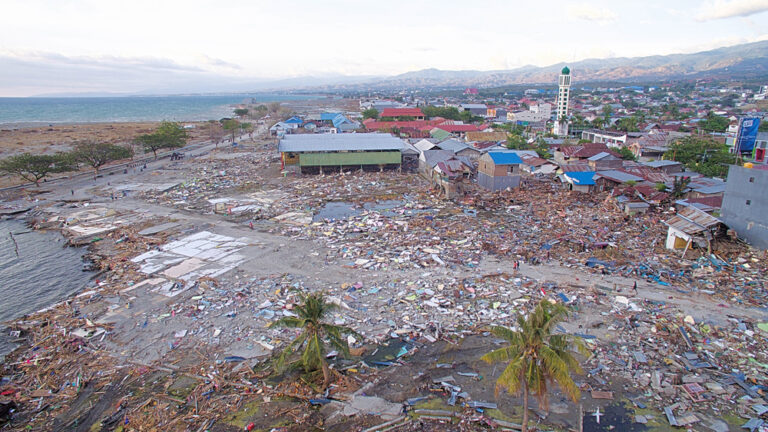Scientists have used computer modeling to uncover the mystery behind the causes of last year’s deadly Sulawesi tsunami in Indonesia.
More than 4,300 people died in the tsunami and earthquake that struck the Indonesian island of Sulawesi in September last year. Many of the deaths were the result of the 7m high tsunami that swept into the coastal city of Palu in the aftermath of the quake.
But as rescuers sifted through the wreckage, scientists struggled to make sense of what had caused the devastating wave. The magnitude 7.5 quake that triggered the tsunami primarily offset the ground horizontally, whereas large-scale tsunamis are typically caused by vertical offsetting.
In a bid to solve the mystery an international team of geologists, geophysicists and mathematicians from Germany’s Gauss Centre for Supercomputing used computer modeling to accurately recreate the conditions leading to the world’s deadliest natural disaster of 2018.
The earthquake model that they created at Gauss’ Liebniz campus differed from traditional data-driven earthquake models by incorporating more real-world physics into the modeling. Researchers did this by coupling the model with models of the physical processes occurring on or near the fault line.
Through their modeling the team discovered that the tsunami may have been generated by movement in the sea floor. The model suggests that while most of the movement was lateral, the sea floor may have slipped vertically along a fault line in Palu Bay itself.
The Liebniz team estimate a vertical seafloor change of between 0.8m and 2.8m. The team’s results were published in Pure and Applied Geophysics.
“Finding that earthquake displacements probably played a critical role in generating the Palu tsunami is as surprising as the very fast movements during the earthquake itself,” said the paper’s lead author Thomas Ulrich, a PhD student at Ludwig Maximilian University of Munich.
“We hope that our study will launch a much closer look on the tectonic settings and earthquake physics potentially favoring localized tsunamis in similar fault systems worldwide.”



